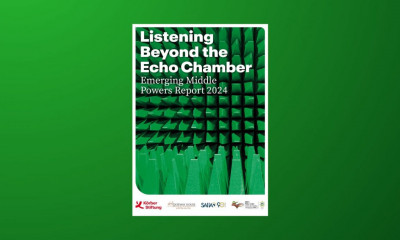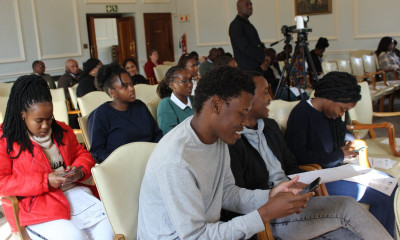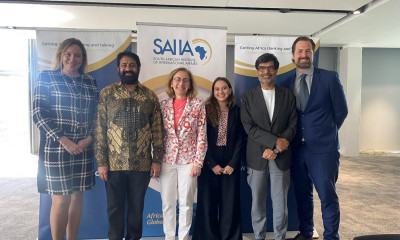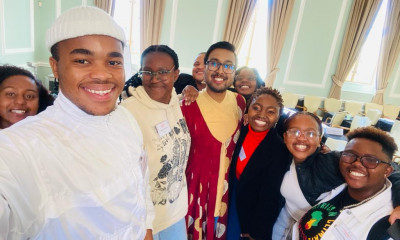It proposes significant adjustments to current South African trade strategy stances, particularly in light of the impasse at the World Trade Organisation (WTO) and the resulting development of ‘mega-regional agreements’ outside the WTO system. Below are all of the materials created by the project.
Background to the Project
Until the recent Bali Ministerial meeting of the WTO in December 2013, the Doha Round of trade negotiations was completely deadlocked. The trade facilitation accord negotiated in Bali, while significant and offering the prospect of some forward movement, concerns only a small component of the Doha Round’s agenda. While it is too soon to tell whether it will generate sufficient momentum to unlock the Round and secure a broader deal, prospects are still not particularly promising. Consequently many countries have pursued their trade interests elsewhere, particularly through bilateral preferential and free trade agreements.
In this light, the establishment by the largest developed economies of regional declarations of co-operation and integration – termed ‘mega-regional agreements’ – is significant. Among these, two major initiatives stand out for their sheer size and ambition: the Transatlantic Trade and Investment Partnership (TTIP) between the USA and the EU, and the Trans-Pacific Partnership (TPP) between the USA and a number of American and Asian states. In addition to encompassing a significant proportion of global trade, these agreements aim to promote deep integration between members, focusing not only on substantial and near-complete tariff liberalisation, but also aiming to significantly reduce non-tariff barriers and provide harmonised and consistent rules for a range of issues including services, intellectual property regulations and government procurement.
The mega-regionals have the potential to reshape the global trading system. On the one hand, through the process known as ‘competitive liberalisation’, if successful they will establish new global norms and regulations that will find their way back into the WTO at some point in the future. Under this scenario, developing countries not participating in the formulation of these rules in the mega-regionals will be confronted by a changed regulatory landscape; one not necessarily in keeping with their interests and capacities. On the other hand, it is widely accepted that global trade rules have to advance and the mega-regionals may offer some prospects for ensuring this takes place. If so, since other significant developing countries would have signed up to these norms – under the TPP especially – it will be difficult to resist the regulatory wave. This has implications for the conduct of business in the WTO; for example will plurilateral negotiations become the new normal?
Furthermore, while major economies move forward with bilateral and regional agreements along “21st century” lines, there is growing concern by outside countries looking in that these agreements are exclusionary in nature. These countries, most notably developing nations, are rightly concerned that such agreements will substantially harm their trade preferences and prevent them from fully participating in global value chains and regional growth.
How these processes unfold, and what their implications for the global trading system will be, is a matter of great conjecture. This project, ‘A Review of South Africa’s Trade Strategy in Light of Global Developments’, seeks to influence South Africa’s trade strategy choices and policies in the wake of the Doha Round impasse, and emerging strategic realignments in the global trading system. The project will review the implications of “mega-regional” FTAs and their implications for the WTO, specifically the TTIP and TPA; proposals to pursue plurilateral negotiations in the WTO; and the Bali Ministerial Agreement with a particular emphasis on the trade facilitation agreement. Such discussions should contribute to the recalibration of current South African negotiating strategy in forums such as the WTO, the Tripartite Free Trade Initiative involving SADC, COMESA and the EAC, and South Africa’s own unilateral trade policy with its attendant implications for SACU.
Through this engagement, the project aims to contribute to the economic development and growth of South Africa and the region by proposing significant adjustments to current South African trade strategy stances. Such stances could also have substantive implications for trade discussions in the ambit of the BRICS heads of state forum.
Opinion pieces
- 2013 highlights of SAIIA’s work on SA trade policy and practice, by Wolfe Braude (17 December 2013)
- Why 2014 is a crucial year for AGOA, by Mfundo Hlatshwayo (11 December 2013)
- China’s Reforms, the Global Trading System, and South Africa’s Trade Strategy, by Peter Draper (05 December 2013)
- As the WTO goes to Bali, it simply cannot be business as usual, by Memory Dube (03 December 2013)
- South Africa’s Termination of Bilateral Investment Treaties, by Peter Draper (30 September 2013)
- The Future of World Trade: Is the era of global trade negotiations over? by Lee Padayachee (25 September 2013)
- South Africa’s Trade Relations with Developed Countries, by Peter Draper (12 August 2013)
- Time to set SA-US trade on a fresh trajectory, by Catherine Grant Makokera (26 June 2013)
- Does the draft investment bill threaten foreign investors’ rights?, by Peter Draper & Azwimphelele Langalanga (02 April 2013)
Events
- A Review of South Africa’s Trade Strategy in Light of Global Developments (25 March 2014)
- Trade And Misaligned Currencies: Towards A WTO Solution For Predatory Government Interventions? (19 February 2014)
- The renewal of AGOA and the prospects for US-SA trade relations (29 January 2013)
- SAIIA event on sidelines of WTO Ministerial Conference (4 December 2013)
- How Should Foreign Investments Into South And Southern Africa Be Regulated And Protected? (6 September 2013)
- Parliament workshop on South Africa’s Trade Agreements and relations (1 August 2013)
- The African Growth and Opportunity Act (AGOA): Where to from here? (17 September 2013)
Publications
- SAIIA Submission on AGOA Performance (28 January 2014)
- SAIIA Submission on South Africa’s Trade Agreements and relations (1 August 2013)
Media coverage
- SA still has reservations about global trade talk trends (25 March 2014)
- SA’s trade status is at risk as China grapples with Doha (05 December 2013)
- Scrapping treaties will not hurt ties (27 September 2013)
- Foreigners fear SA intends to expropriate their assets (02 April 2013)







